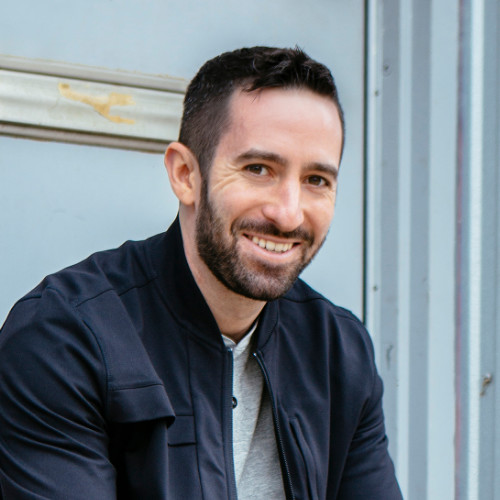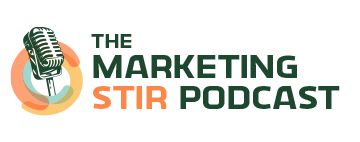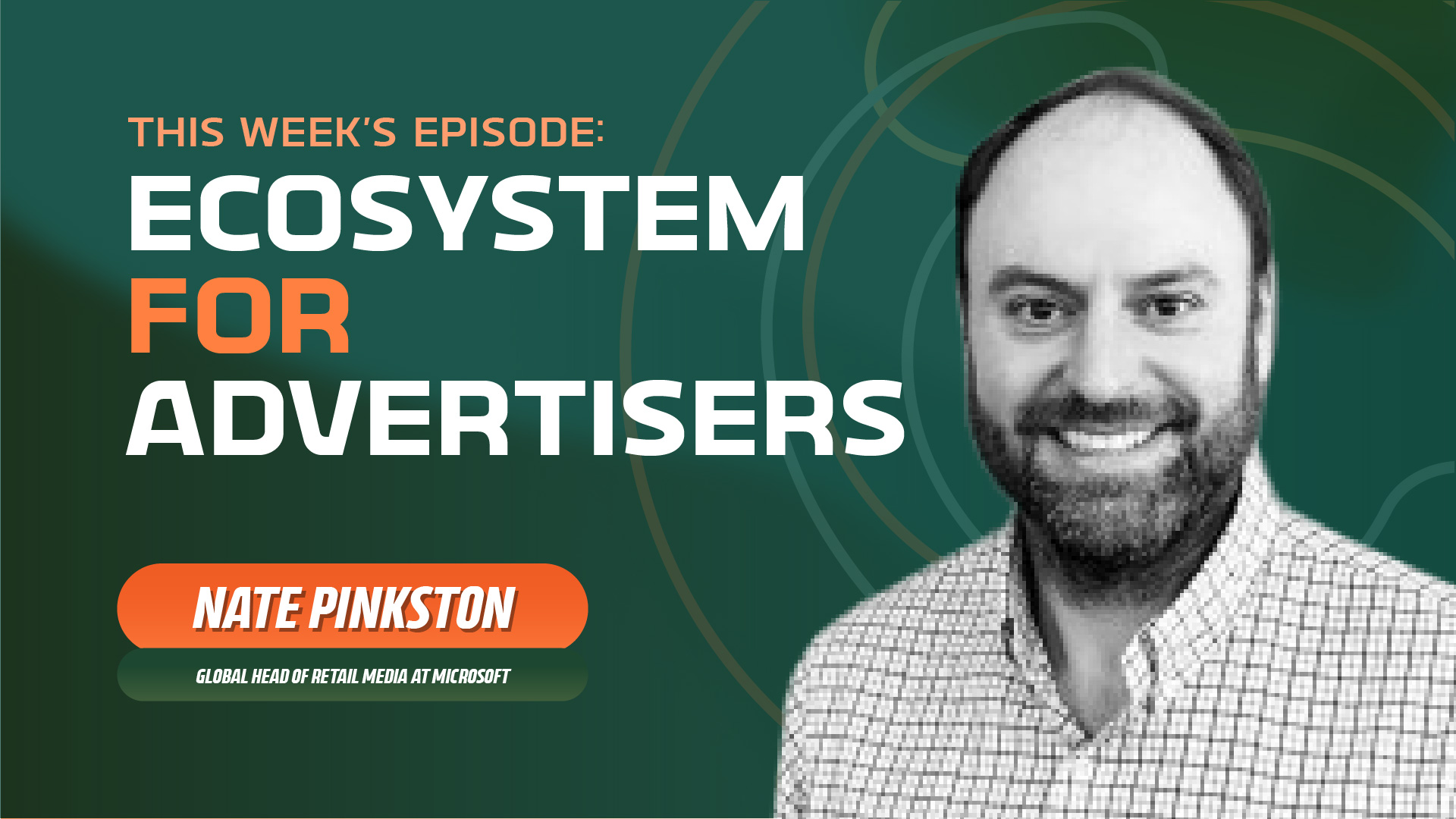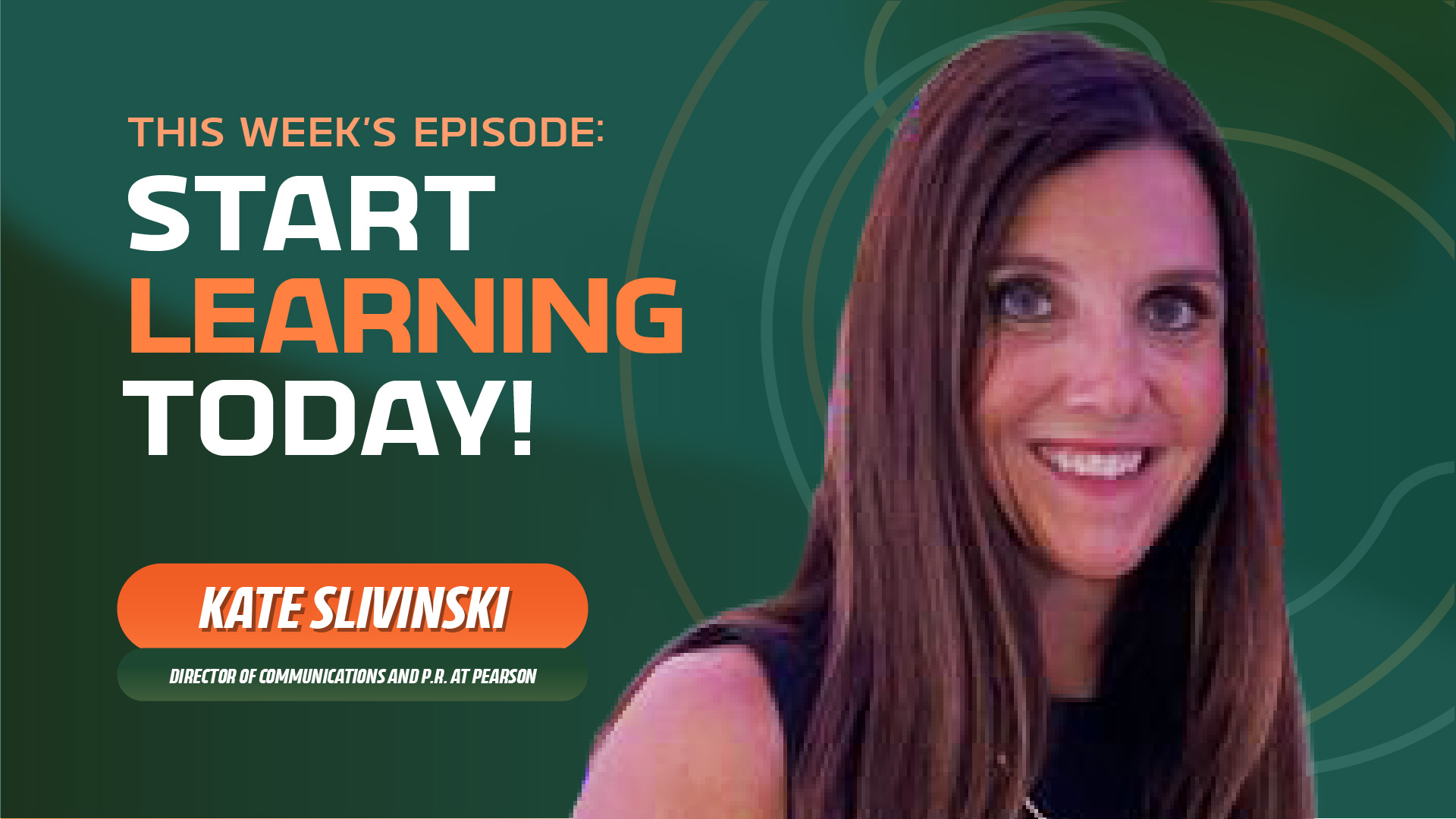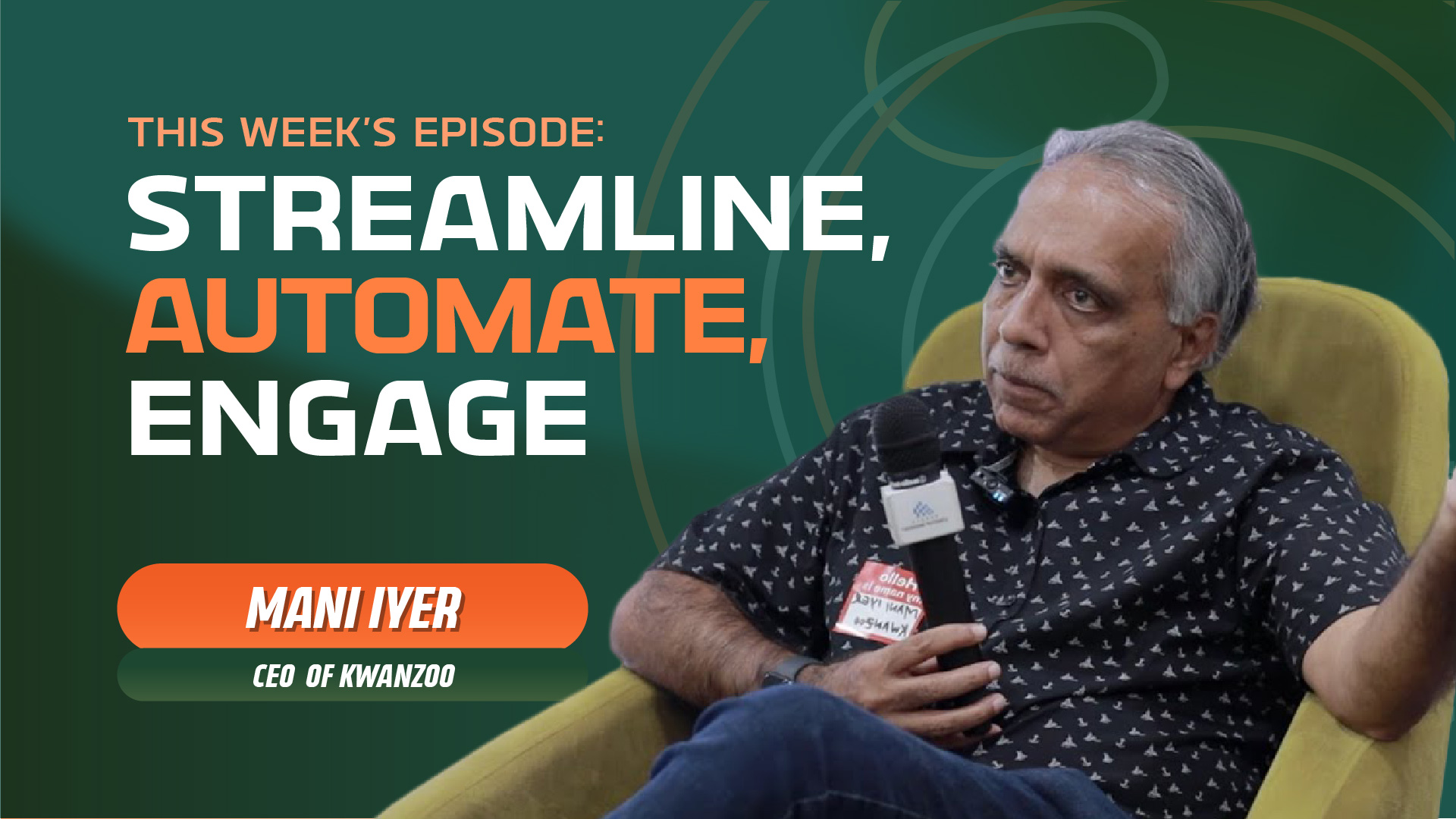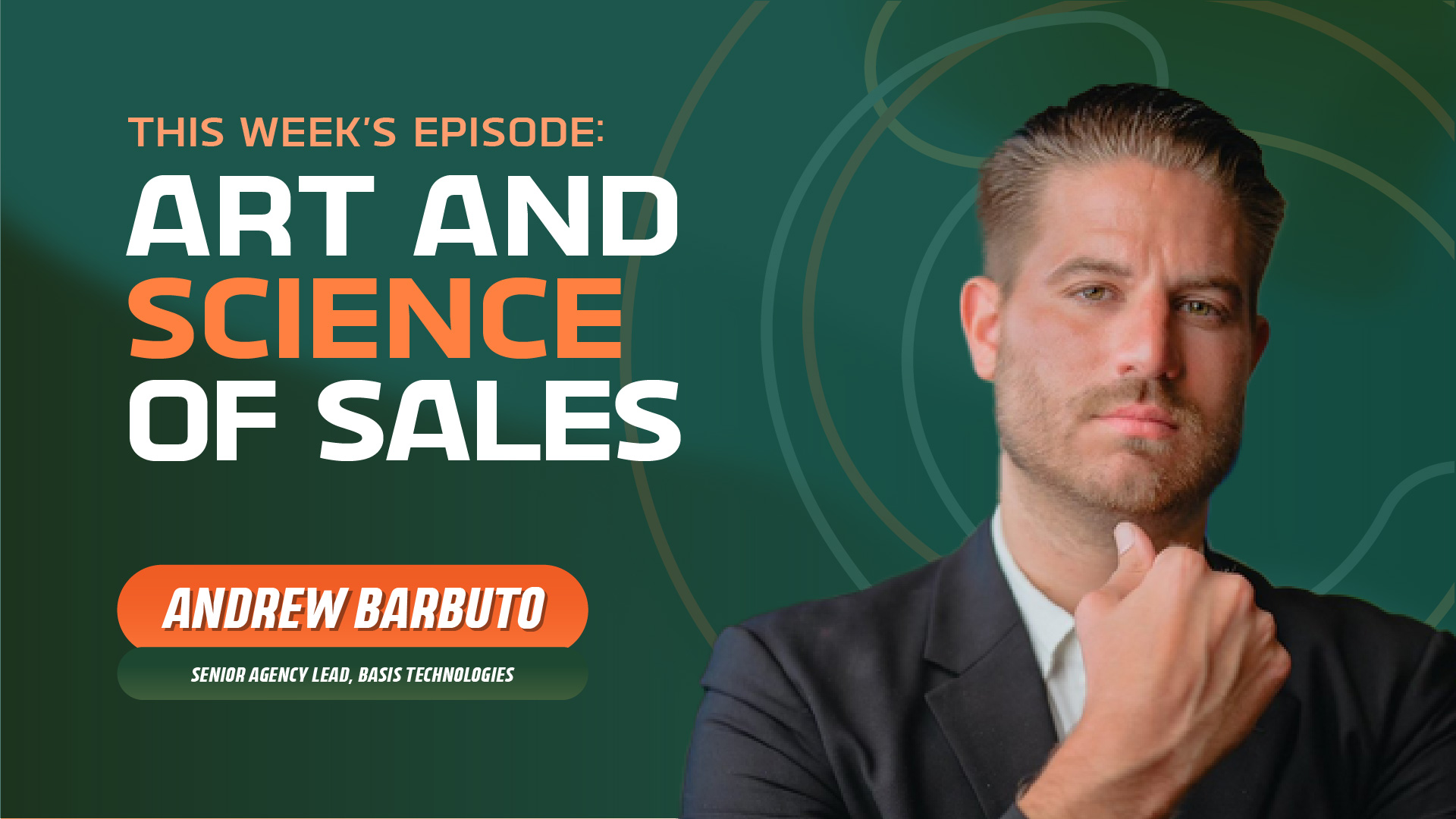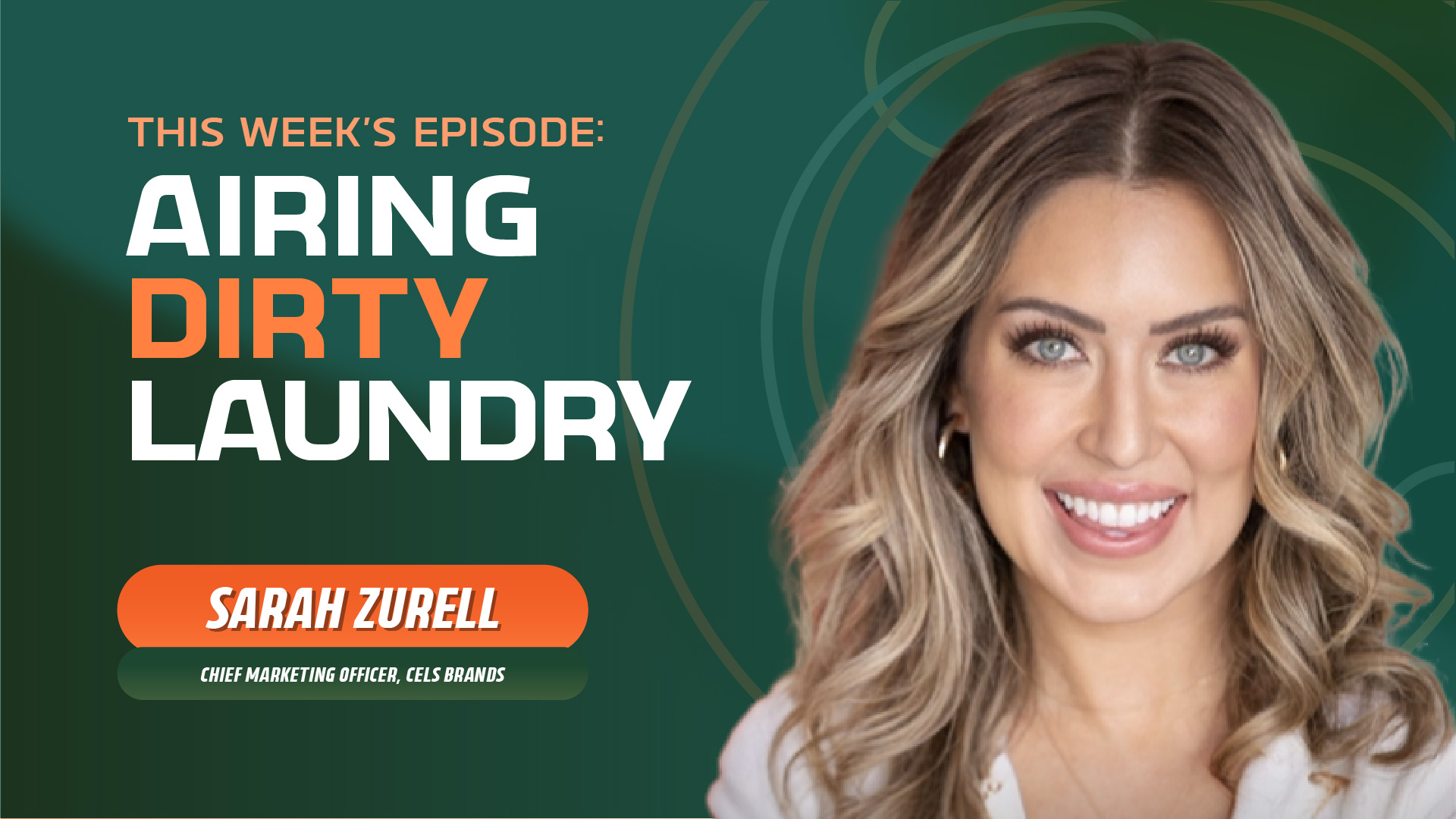Howard Zisser & Zach Goldstein (Public Rec) - Double the Fun
- 0.5
- 1
- 1.25
- 1.5
- 1.75
- 2
Jared Walls: Welcome to the Marketing Stir podcast by Stirista. Probably the most entertaining marketing podcast you're going to put in your ears. I'm Jared Walls, Associate Producer and Stirista Creative Copy Manager. The goal of this podcast is to chat with industry leaders to get their take on the current challenges of the market, but also have a little fun along the way. In this episode, Vincent and Ajay talk to Howie Zisser and Zach Goldstein of Public Rec. Howie is Head of Marketing, and Zach is CEO and founder. They discuss the challenges of expanding the product line of the leisure apparel brand, as well as the particulars to consider when working with social media influencers. Ajay looks forward to a trip to New York, and Vincent, not a fan of open- toed shoes. Give it a listen.
Vincent Pietrafesa: Ladies and gentlemen. Hello. It is me, Vincent Pietrafesa of Stirista, the Vice- president of B2B Products and Partnerships. That must mean one thing and one thing only. Well, maybe two things. One, we're on a sales call together, that would be weird. Or two, we are on the Marketing Stir. It is so great to be here, ladies and gentlemen. We have a special episode today. You'll find out why. It's only the second time we've done an episode like this. I'm probably stumping my co- host. He may not even know what I mean by this, but we'll get to him in a moment. First, let's pay some bills. Stirista, who are we? Identity marketing company. We focus on helping customers get new customers. We own our own databases, business to business, business to consumer. We have our own technology, our own DSP, AdStir. We can generate display connected TV. We can help you get new customers. Do I even need to say more? Email me, vincent @ stirista. com. That is how confident I am, I just gave you my email address. Thank you. The only other thing I'm confident in in life, if my wife heard this, she'd be like," Wait a minute. Really? You're talking about your co-host like this?" is my co- host, my commander- in- chief here at Stirista, CEO of Stirista, Mr. Ajay Gupta. What's going on Ajay?
Ajay Gupta: Hey, Vincent. Good to see you again. It's been a little while since we recorded one of these crosstalk.
Vincent Pietrafesa: I know. I know. We're busy. I was just in San Antonio. I just saw the team, real people, real high fives, real hugs, no more of those weird fist bump and a person sticking out their foot to say hello. I'm like, what are you doing? You have an open toe shoe on, why would you even do that right now? But yes, it was great to see you in person and the team. I already miss you. I already miss the team.
Ajay Gupta: Well, I'm looking forward to seeing you and our New York team in about, I guess, only a couple of weeks now. So we're getting to some normalcy here where I'm seeing you more often than, I guess, more than once every year.
Vincent Pietrafesa: Look at this. Lucky you. The Gupta returns to New York City. We're happy to have him in July. So any of our listeners want to meet up with us, email me. I can't guarantee it, but at least reach out to us. But Ajay, do you know why this is the second type of episode that we have? What is so unique about this episode?
Ajay Gupta: I believe we have two special guests instead of one.
Vincent Pietrafesa: See, that's why you're the CEO.
Ajay Gupta: Double the fun.
Vincent Pietrafesa: Double the fun. And this company, man, I got to tell you, some of the softest, best quality, fabrics that... I don't even know where your source is, don't give that away, because that's a whole other thing. We don't want to give all those secrets away. But a company that is doing it right. You got to see, you got to check them out. Talking about Public Rec, ladies and gentlemen, and we have two amazing guests. I feel like I am an old man looking at these young... I'm in my forties, these guys definitely look younger than me. So I'll tell you that now. But ladies and gentlemen, I want to please welcome to the Marketing Stir. First we have the Head of Marketing, Howie Zisser, and the founder, CEO, Zach Goldstein of Public Rec. Ladies and gentlemen, please welcome them to the Marketing Stir. What's up fellas? How's it going?
Zach Goldstein: Hey, it's good. Glad to be here. Thank you for having us.
Vincent Pietrafesa: You guys are younger than 42. I could tell that. I love it. Look at this youth Ajay.
Zach Goldstein: I don't feel it, if that means anything.
Ajay Gupta: Vincent doesn't feel a day older than 25.
Vincent Pietrafesa: No way. Nor do I act it. No, I have to. I have children, I have small kids, so I have to be an adult sometimes. But it is so awesome having you guys on. Thank you both for joining us. I love that we're going to get two perspectives really, because, one, Howie with the marketing aspect, and Zach founding the company. But first Zach, let's go to you. Tell us about yourself, your role within the organization and just tell the public out there what Public Record is.
Zach Goldstein: I'm the CEO and founder. Started the brand about six years ago. We're a leisure apparel brand, mainly direct to consumer, mainly selling through our website. We started with one pair of pants, the All Day Every Day Pant. It's a nicer fitting pair of sweatpants. They come in a waist and inseam sizing so they fit better. We launched the brand, built it over the last five years, men's only, and then recently launched women's in December last year. But excited to be here and thanks for having us.
Vincent Pietrafesa: Awesome. And then Howie, tell us about yourself. How you joined Public Rec, your involvement in it, and some of your day- to- day responsibilities there.
Howard Zisser: Sure. I'm the Head of Marketing for Public Rec, so with, I assume any fast- growing company, wearing a lot of different hats, but spending a lot of my time just overseeing all of our paid channels, digital and offline, from social to search, influencers, affiliate, podcasts, and then also identify new channels so that we can continue growing and reaching our new customers as we hit new milestones.
Vincent Pietrafesa: Zach, tell us about how Public Rec started. Were you into fashion? Were you just like, there's a need, I should say, for some more leisure wear that looks really good for men? I feel like men were neglected for many years with this, so I just want to understand why.
Zach Goldstein: I always knew I wanted to start a company. That was just a passion that I've had for a long time. Throughout college wearing lots of baggy sweatpants and baggy sweatshirts and feeling like there wasn't a brand that was focused on updating that type of clothing for men in particular. it was always a big baggy hoodie with the college logo or gray sweatpants. Had the idea in college. Didn't pursue it right after college. Went into finance after college. But the idea stuck with me, continued to think about it. And I, from a young age, always felt comfortable walking into a clothing store and quickly picking out what I thought looked good and what others might like, and so I felt comfortable in that space. It got to a point where I was feeling okay about pursuing it, started working on it and figuring out, how do you make a prototype? How do you find fabric? How do you make a pair of pants and find factories? And we launched on Kickstarter May 2015, and that was really the initial launch of the brand.
Ajay Gupta: Zach, inaudible a little bit of how things have changed over time, especially in the last year, as more people are working from home. Has that been a benefit for you?
Zach Goldstein: I think a shift that we were experiencing before COVID was just people were dressing more casually. That was just something that we were seeing in society beforehand. And as COVID hits, people start spending more time at home, I think that just accelerated the shift that we were seeing towards more casual clothes. A part of the aspect for the brand is that they're clothes that are comfortable, super comfortable, that you can still good about wearing them outside of the house, and so I think now we'll start to see, as people go back into doing things outdoors more, that hopefully the brand is resonating even more, because it's comfort that you could wear inside your house, but still feel good about taking it outside. I think it was helpful for the brand in terms of just moving society towards more casual, comfortable clothing, and we'll continue to see how it plays out.
Ajay Gupta: That resonates with us. We just started returning to office occasionally this week, actually, and our clothing requirements have definitely changed to a much more casual atmosphere now, so it makes sense. Howie, question for you, how has marketing changed over the evolution of the company? What are some of the goals that have changed for you, or not changed?
Howard Zisser: As we've grown, Zach alluded to earlier, we've expanded our products and also added a women's line. So early on marketing was pretty simple of just promoting the All Day Every Day Pant. That was our only product for a while, and then it was our main product and hero product. And as we've grown, we've added new styles and just different categories entirely that have proved to be winners for us. So just expanding and broadening out the marketing messages and pushing different products. Along with that, as we've grown the product line, we have shorts and joggers and different types there, so working on seasonality types of things, pushing more the messaging around the shorts and more summer outfits at this time a year, and then gearing up and ramping back up for pants and bottom season as we head into the fall.
Vincent Pietrafesa: I consider myself a fashionista, just based on the shirt I'm wearing right here. You know what I love? First of all, you mentioned it too, Zach, I love the fact that you could... Normally, when you get a jogger, per se, it's medium, large, extra large. This is tailored to the size so it fits better. I'm a 36 waist. I'm putting that out to the world. I'm not ashamed of it. I love it. Anyway. But I love that fact of it. And also I love the fact what's in what you're doing for the men and women's line. Really, I saw it in the women's line. Is the same color. That's very much in, the sweatshirt and the same color pants. I've seen that. That's really not a question. I'm just saying good stuff. I love where you're going with that. My question is, what made you add the women's line? I love seeing that and I love seeing the combinations there. But what made it add it? Was it a result of just people saying," Hey, what about us?" Or what was the thought process behind it?
Zach Goldstein: We've been getting inbound from women for a long time now, like" Can you make this for us? Can you have a women's offering?" And so that's a demand that we felt for a little bit now and felt comfortable testing into and seeing how the brand would resonate with women. And then, as you mentioned, one of the big things that we've done to differentiate the brand for the product is offering waist and length sizing, because for men leisure pants, normally small, medium, and large often don't fit because of that, and it feels like that was being ignored for men. Then as we started to learn more about the women's space and understand how women shop, it was like, that's the same problem, if not even greater, for women. They don't have a waste and an inseam, it's one size so it often doesn't fit well, it needs alterations, or you just need to find the brand that fits you, and so the same problem and messaging that we were trying to solve for men seemed to resonate and transfer to women. Spent a bunch of time developing products, spent a bunch of time sharing the product with women, getting feedback, understanding if it was resonating, if the fit was right, and got comfortable with it makes sense now for the brand, and went after it. Like I said, we launched December 2020, worked on it for probably two years before that, and we're still learning, we're still figuring it out, and getting customer feedback, and figuring out what works for women. But it's been a great launch for us and we're excited to keep growing it.
Vincent Pietrafesa: What would you say separates your brand in the leisure apparel arena?
Zach Goldstein: We spend usually two to three years before we come up with a product, sourcing fabric and then refining the fit, so we're incredibly focused on whatever we come out with we want it to be perfect and be better than what's out there today and differentiated. So there's a high focus on the product. And then as far as the brand, we try to think of our... We're sourcing expensive fabrics, and then we try to think of these fabrics being able to transfer, not just for comfort in home, but for comfort outside of home and still look good outside of home. So the versatility of the brand is something that we try to focus on and make sure that, no matter what you're doing throughout the day, you still look good in our stuff. You can go to the gym, you can go to the office, you can go grab drinks with friends, or travel in it, and it works for all those different occasions. We're trying to differentiate it.
Ajay Gupta: Zach, walk us through the creative process that goes into creating a clothing item, and what the QA process is, and how does it go from concept to being on your store.
Zach Goldstein: We have a lot of help. We're working with a couple of designers who we've worked with for four or five years. We have a few different production partners, a few different factories, and then a production partner. So we have a lot of different parties that are helping out. But it starts with I helped drive the product. It was something I was always passionate about, so for men's in particular, it's either I'm coming up with what about this, or it's our designer, or someone in the team will surface something and say," A customer's asked about this," or" I saw this the other day, what about this for us?" So it all starts with an idea from anyone we're working with, and then it's like, okay, what's out there today in the market that's similar to what we're talking about and how do we do it better or differently? Or if it doesn't exist today, let's talk a little bit more about how we're going to execute on it and why doesn't it exist today? It's a lot of just coming up with the product and then, how does it complement what we have today? Is it for summer? Is it not for summer? Is it a bottom? Is it a top? And then, what type of fabric do we want it in? Is it an existing fabric we use today? If not, let's go out and see what else is in there in the market and see fabrics that we like. Do we like a similar fabric? Do we want to see it in this design or not? Then it's we're putting together a tech pack, which is the technical term that you send to the factory that gives them instructions on how to make the product. They send back prototypes. So you send the tech pack to them, you get back a prototype in three or four weeks, you give comments on it, you find out if you like the fabric that you chose, you end up usually changing the fabric multiple times, you're changing the fit multiple times. It could be a long process back and forth. And then hopefully we got to a point where we're comfortable, the fit's good, the fabric's good, let's go and make a whole bulk order.
Ajay Gupta: Howie, question for you. Talk to me a little bit about your marketing stack. What are some of the marketing tools that you live by and love and recommend to other people?
Howard Zisser: Our marketing stack is pretty basic, honestly. We use a lot of the native platforms, Business Manager for Facebook and Instagram, Google Ads for Google Ads, and then increasingly with the changes in the ecosystem alongside iOS, looking more holistically at Google Analytics and getting a source of truth, even though it's just last click there, to match up some of the missing data that we're seeing in different platforms with what we're definitely seeing at the very least in Google Analytics with last click. So that gives us a north star to direct us and guide us forward about where to allocate budgets in the coming weeks and months.
Vincent Pietrafesa: Howie, staying with you, have there been things marketing wise that you've done in the past that you thought were really going to work that didn't? And then that same thing, what surprised you about some channels? Was it one day so- and- so wearing your thing, or an influencer by accident wore it? Talk to me about that process, if you will.
Howard Zisser: Trying to think specific examples of anything. I think just generally speaking, with influencers there's just a lot of work that needs to go into it, especially early on as we got into it. It can be exciting when someone has a large follower account or something like that and looks like a good fit for the brand and everything, but maybe just doesn't perform for whatever reason or interests weren't maybe aligned. So that has been a learning process, just figuring out exactly what it is, whether it's an influencer or affiliate or other partner, looking for what the metrics that matter are. And it's not so much about some of the more vanity metrics like follower account, and even sometimes engagement rate can be misleading. Some of the things that have gone really well that were a little bit of a cross your fingers and let's hope, is we've done a lot of podcast testing, and within there we find winners, we find losers, of course, but we've seen a lot of success from the ones that have won. And it's also nice, just anecdotally, when we hear from our own networks of people listening to a particular podcast and they stumble across our ad, it's just nice to see stuff in the wild like that. And we'll get the occasional tag from a celebrity or an athlete, which is always fun for us to see and it's a nice pat on the back and cool for us to see at the moment.
Vincent Pietrafesa: That's awesome. Zach, we've talked to a lot of different companies and brands on the podcast, and I say this as this is okay if this is the case, because we have some brands who throughout the pandemic boomed, or increased sales, because they're solving a solution. We had a company on called MakeSpace and people we're just like," What do I do with all this stuff? I may move. I might not." But because more people, I think in, general, were just like, all right, well, I'm going to be at home, I still need to look good but I want to be comfortable. Did that" help" the brand?
Zach Goldstein: I was going to say, I think it hurt us a little bit. We grew year over year. I don't think we grew at the rate we otherwise would have. We were fortunate to still grow and fortunate that we didn't have to fire anyone at all, and incredibly fortunate with all that. But I think in general, for our main customer, men who are staying home, we still saw some people who were buying our stuff and that was great, but I think it felt like the majority were more towards the, I'm going to be home. It doesn't really matter what I look like. I'm not sure I need to buy new clothes. And then there's some uncertainty in the job market, or what my disposable income might look like going forward, so it's like, do I need to buy new clothes, or should I keep it for things like food or whatever, more immediate needs. I think we suffered from that a little bit. But generally it's hard to tell how much one impact had versus the other of people wanting to be comfortable and how they viewed our product.
Vincent Pietrafesa: No, interesting perspective.
Ajay Gupta: Zach, have you looked at going direct to retail or opening even your own retail stores?
Zach Goldstein: Yeah, we had just opened one November 2019 in New York and we had it open for about five months. We closed it because of COVID and then ended up being done with it. But we're in the process of... We're going to be opening a couple more stores. We're opening one in Chicago in September, we're opening one in October in New York, and then another one in California early next year. We're excited about getting back into stores and opening stores. Then as far as in other retailers, we have a partnership with Nordstrom that's relatively new for us, we're in 15 Nordstrom stores, and so we're excited about trying to grow that partnership together. And we have a good partnership with Stitch Fix as well. And so those are two channels that we're pretty focused on growing over the coming years, both our own retail stores and then working with other retailers as well.
Ajay Gupta: Great. This is a question for both of you, and we'll start with Howie. What's been a highlight for you in the last few years that you're particularly proud of either professionally or individually?
Howard Zisser: Good question. I think just professionally for the last year or so, I think we had made a big effort to bring a lot of our creative talent and our media spend and media buying in- house, and that was a big push. It took about a year to get there, but we have a pretty substantial creative team now that puts out all of the ads and all of the different creatives you see all across the web that look so good and so awesome all the time, and I think that that has just given us a little bit more control on the brand and the creative and some of the tone and messaging that we maybe didn't have before. So that was a lot of work, that was a lot of adjustment, but it's gone, I think, pretty well so far, and we're still refining it and growing and building out of there.
Ajay Gupta: Same question for you as well, Zach.
Zach Goldstein: I'm most proud of, or what comes to mind immediately, is just the team that we have at Public Rec, and thinking about we're a team of 17 today and everyone who works here cares a lot, works hard, is fun to be around, and I feel fortunate for the people we have and it feels like we're all aligned on a common goal of really growing the brand and doing good work together.
Vincent Pietrafesa: Zach, tell me about when you started the company and through the evolution, what were some things that you thought were going to be easy, but wound up being hard, and then hard that wound up being easy.
Zach Goldstein: Easy that wound up being hard. It was hard to have an expectation on it being easy, but something that was, I guess, a lot harder than I anticipated was just managing fulfillment. We've worked with a few different fulfillment partners, it's always been just very challenging. And so managing returns, managing orders going out on time, making sure our inventory is not being misplaced and being handled correctly. All of that, it can be stressful. And then something that ended up being easy that I thought was going to be hard. I have to give that more thought.
Vincent Pietrafesa: It's all Right. We get deep here on the Marketing Stir. People don't realize that. That could be your final thought at the end. Zach, talk to me about the evolution of the company in the sense of where you started. It was the first few years just you in an apartment, and then when did it, all right, I'm adding employees, this is starting to click for us?
Zach Goldstein: Like you mentioned, the first few years, ran the business by myself, trying to get to a point where it was self- sustaining, where I felt like we could support hiring people, but was very nervous to do it in the beginning, to hire outside, and wanted to make sure that the business was working and that we had a customer base. In the beginning we do this Kickstarter, the Kickstarter goes well, end up moving from Chicago to New York. We manufacture in New York, so I'm living in New York, a couple of blocks from the factory, so I'm visiting the factory a few times a day, and I'm visiting the fulfillment center, which was in Brooklyn a few times, sorry, a few times a week, both were a few times a week. And handling customer service, responding to emails as anyone has questions, the returns are coming to my apartment once a week, I'm steaming returns in my apartment, folding them, putting them in new poly bags and then bringing them back to the fulfillment center so that they can be put back into inventory for those that were in fine quality. Then just in the beginning working with a lot of different freelancers, agencies, and then fortunately got to a point where the brand was a little bit bigger, it was growing, started hiring people two and a half years ago, and we've grown the team ever since.
Ajay Gupta: Zach, any news or something that's coming up, maybe a new design, that you'd want to share with the viewers?
Zach Goldstein: Our bestsellers are really the All Day Every Day Pant, All Day Every Day Jogger. We offer them in a lot of colors today, eight or nine colors. We haven't added new colors in a few years, we're adding a couple new colors this fall. So we're excited to do that. That'll differentiate from what's currently being offered in our colors, and excited for that. Then we're excited for the store opening. That we're going to opening our first store, or really our only store, but we're reopening, I guess, in Chicago. We're excited for that as well.
Ajay Gupta: Great. Howie, a question for you and then I'll come back to Zach for the same question. So one of our staple questions here is, what's a message on LinkedIn that gets a response from you and what's one that really annoys you?
Howard Zisser: Good question. A good message, it's probably what most people think, but is personalized, there's something in there that is specific and relevant to me and it's more than just a canned type of thing of, I saw we went to the same college, but something a little bit more in depth than that. And then also I hope to be pretty clear on what it is you're trying to talk about in that message. Then on the flip side of it is when I read the message and I have no idea what they're asking for and they want a 30 minute meeting and I don't know what the meeting is going to be about, so it's hard to do that. And then the other one is a big pet peeve of mine, is when someone reaches out saying that they're a huge fan, they love our products, and they've never bought from us. I can see that, and it's just a little fluff to gain some favor, but might backfire on them.
Vincent Pietrafesa: That's funny. Then you can look them up, you're like, actually, do you use a different name when you purchase our products? I looked it up. You haven't purchased anything. I love that.
Ajay Gupta: Same question for you, Zach.
Zach Goldstein: I think similar to Howie. If it's personalized, that'll get my attention. If they name a competitor that they've worked with, that I'll always pay attention to. And then the flip side of when it's not as great of a message, as either you can tell it's a canned, they say it to everyone, or they misspelled my name. Either one of those, and it's like, okay, probably not a great connection.
Vincent Pietrafesa: Well, Zach, you said something there. So if someone mentions a competitor, does that peak your interest? Maybe they know something, that sort of thing? Or is it, well, I want a fresh perspective? What is it of the mention of the competitor that gets your attention?
Zach Goldstein: If they say, I worked with X brand or we've done this for X brand, and it's a brand that we follow or think highly of, or is someone that we look to, then it's like, okay, maybe it's worth having a conversation, understand what they did for that brand, understand if they could add value for our brand.
Vincent Pietrafesa: If you're Howie, Howie goes in and does the research and makes sure that they actually work with that brand, so they're just not saying anything.
Zach Goldstein: Correct. There are a lot of companies who have the logos of brands, or they worked with many years ago, and it's like...
Vincent Pietrafesa: They haven't worked with them in like 14 years. And it's like, well, hey, you worked with them at one point, but at least you may have some insight. So are there, not competitors, but are there other brands out there as a whole, because we talk to a lot of people on the retail side, as you're opening up the stores, where they have to do something different. I'm fortunate to be in New York City, where most of the flagships are, so I get a different experience than say someone in San Antonio, maybe the store is different. How do you think retail has changed why the stores now? Why do you feel like people want the physical stores? I know I do, but talk to me a little bit about that.
Zach Goldstein: I think part of it for us with feeling like we were big as a brand to support it both financially and then existing customer base or hopefully new customers that maybe had heard of the brand before, but didn't want to order online, wanted to check it out in store. So we were just on that cusp of feeling like we're big enough where if we opened a store in a certain location, if someone walks by maybe they'll have heard of the brand before, or if not we talk about it or put it on our website, it might drive traffic towards the store. But I think always interested in stores and thinking like it could be a good channel for us. Then we had that test in New York, we were open for five months and that was going well, and then we are so focused on the fabrics and making sure that it's super high quality and premium, so it's like if a customer can shop it in store and feel the fabrics before they're purchasing it, it's just such an added benefit to interacting with a brand and understanding what we're about as a brand.
Vincent Pietrafesa: Then just last one, Ajay, before we get to you. Just are there, doesn't have to be retail, just are there brands out there now that you feel they're getting it right? There's the personalization, there's some brands out there who are getting it right that you aspire to?
Zach Goldstein: Howie, you want to go first?
Howard Zisser: Did you direct at me? Sorry, I apologize.
Vincent Pietrafesa: Either one. We've got the dynamic duo here, so whoever wants to jump in.
Howard Zisser: Trying to think how to take it. crosstalk.
Vincent Pietrafesa: If there's any airlines out there offering a personal touch. What I'm going with is I feel like that personal touch, the connectivity to the client, the customer, is so important. So is there like, well, I feel like American Airlines, or some other company, a brand is getting it right, and/or our mission is to X, get back to the customer, however you want to take that. I told you we get deep here at the Marketing Stir.
Zach Goldstein: The one brand, this is maybe generic, or I feel like everyone... I just think Warby Parker provides a really good experience for the customers. If something ever goes wrong... My dad, he's always talking about the brand because of the customer service, and so that evangelism of he loves talking about the brand, he loves wearing the glasses and then talking about his experience buying the glasses, because they've always just provided a great customer experience. Even if something goes wrong, it's like they immediately fix it and he's happy with the resolution. crosstalk.
Howard Zisser: I have a different one, I guess, not so relevant to what we do in apparel, but I'm big fan of Airbnb and use them a lot, and to see the pivot they made during COVID where they made it so much easier for local getaways and weekend getaways that are more road trip oriented when no one could really travel, just spoke to how they looked at their customers and how they were willing and able to change things to make it a little bit more accessible and more appealing to them. At least it worked on me.
Vincent Pietrafesa: Nice. Now, I just need to get it to the personal side.
Ajay Gupta: Well, one other work question, and then we'll get into the personal side. Related to the personal touch, how many, or, I guess, is there a large percentage of users that are repeat customers and how do you guys keep your CRM base engaged?
Zach Goldstein: You take it, Howie.
Howard Zisser: Okay. As the company has grown, we've seen stronger and stronger repeat rates just year over year as that customer base itself continues to grow, and then as we've expanded our product line and added the women's line in, just more options and opportunities to buy something, whether it's multiple colors of the pair of pants or it's a top to go with the pants to complete an outfit. So yeah, I think that's the main. Zach, anything to add there?
Zach Goldstein: Just the CRM stuff. We've been building the email list, we're sending email update inaudible I think something we talk about a lot internally is how many times trying to email our customers and we don't want to flood their inbox, we want to remind them that we exist. We have information that we think they might be interested in about a new product. A back in stock email. So that's just a continual debate and test of, how do we talk to our customers through email?
Ajay Gupta: Last question from my end. What do you guys like to do in your free time? And we can start with you, Zach.
Zach Goldstein: I like to golf, definitely inaudible. I try to play as much as I can. I have a pretty big family, so spend time with them otherwise.
Ajay Gupta: Howie, same for you.
Howard Zisser: Living in Chicago, always been a strong proponent of the best way to see the city is to eat your way through it, so just going out to dinner, lunch, whatever it is, trying different foods. And especially after this last year, I feel very out of the loop on what all the cool restaurants are and the new restaurants are, so excited to get back out there and explore the different neighborhoods of the city and eat some good food.
Vincent Pietrafesa: Nice. I enjoyed my time when I was in Chicago. I had a crazy Chicago... I flew out, and at the airport, I'm a Chicago Bulls fan, even though I grew up in New York, flying out at the airport, Scottie Pippen, and at dinner with my friends, Gino's East, it was Brian Urlacher right next to us. I got to meet two Chicago legends in one trip. It was amazing. I didn't get any autographs or anything, but it was just I got to say hello to them. I was like, this is insane. If Michael Jordan walks in, this will be amazing. So it was pretty cool. Zach, one question for you. So you lived in New York and you moved back to Chicago. I've never met anyone who's done that before, because people, they love New York City. So tell me what happened there. What made you move back from New York to Chicago?
Zach Goldstein: I was going to be there temporarily. I'm from Chicago, from the suburbs, my whole family's here. So I always knew I wanted to come back, and actually I was planning to only be there for five months, ended up staying for nine months. But I knew I wanted to be in Chicago. I knew I wanted to build the company in Chicago. Both great cities. I won't do pros or cons for both of them.
Vincent Pietrafesa: No, I'm just messing with you. That's awesome. That's where the family is. You started the company there. This has been awesome. Gentlemen, please check out publicrec.com. That's public and then R-E-C dot com. And I can't wait until the store comes here in New York. I am right here. Would love to go visit it. That is Howie Zisser, he is the Head of Marketing. That's also Zach Goldstein, he's the CEO and founder. I am Vincent Pietrafesa. That's Mr. Ajay Gupta. This has been another episode of the Marketing Stir. Thank you so much for joining. Thank you so much for listening everyone. Have a great day.
Jared Walls: Thanks for listening to the Marketing Stir podcast by Stirista, please like, rate, and subscribe. If you're interested in being a guest on the podcast, email us at themarketingstir @ stirista. com. And thanks for listening.
DESCRIPTION
Howie Zisser (Head of Marketing) and Zach Goldstein (CEO/Founder) of Public Rec discuss the challenges of expanding the product line of the leisure apparel brand, as well as the particulars to consider when working with social media influencers. Ajay looks forward to a trip to New York, and Vincent is not a fan of open-toed shoes.
Today's Host
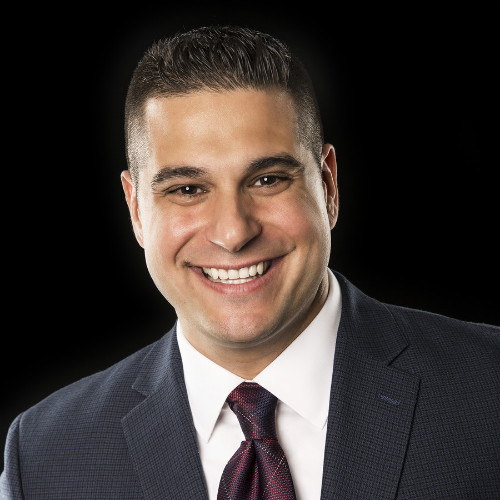
Vincent Pietrafesa

Ajay Gupta
Today's Guests
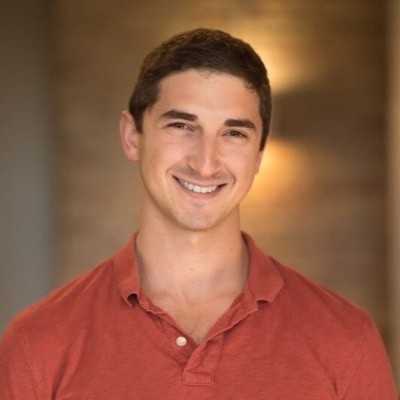
Howard Zisser
